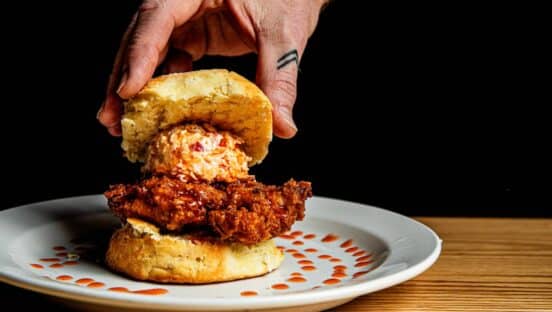Restaurant visionary John Martin, who transformed Taco Bell from a $600 million regional chain to a $5 billion worldwide icon, passed away on January 18. He was 73.
Martin built his reputation as a change maker who always sought improvement through innovation, reengineering, and had a habit of delivering impressive financial growth. He was widely known in the industry as an inspirational visionary. He often said, “If you don’t make it happen, someone else will make it happen to you.”
Martin joined Taco Bell in 1983 as president and doubled system sales in just three years. He reduced operating costs and improved speed of service. Martin also introduced a three-tiered value menu of items priced at 59, 79, and 99 cents. Weeks before, tacos cost close to $1. The value culture created a brand promise that continues today for Taco Bell.
“John Martin was a visionary pioneer whose leadership helped build Taco Bell into one of the most successful restaurant brands today, and ultimately introduced Mexican-inspired food now loved by millions,” Taco Bell said in a released statement. “When he joined Taco Bell in 1983 as president and chief operating officer, he quickly doubled sales in just three years while expanding Taco Bell’s presence around the globe. His revolutionary ideas are now commonplace across the industry. Under his leadership, the brand modernized restaurants with state-of-the-art technology that improved speed of service, and introduced several industry firsts: free drink refills and a three-tiered value menu to ensure customers never had to compromise on quality and flavor. John’s legacy and growth mindset live on at Taco Bell restaurants across the globe today; he will be truly missed.”
PepsiCo bought Taco Bell in 1978. By the time Martin joined in 1983, Taco Bell’s sales had shrunk 16 percent and market share was just 40 percent in a still regional market.
“Martin modernized restaurant exteriors by adding vivid, recognizable restaurant identification, which included a bold yellow bell on a brightly colored background,” Taco Bell said . “Under his leadership, drive-thru windows were added, advertising dollars quadrupled, new packaging and menu items were introduced, and numerous other changes were made to boost the Mexican-style chain to the top.”
The value strategy arrived in 1988. The company introduced six core-menu items for 59 cents and started offering free drink refills, which Taco Bell said was a first in the industry.
Martin pioneered new customer service advantages as well, including reducing order processing times to under 30 seconds from an average of 105 seconds; introducing state-of-the art technology; and developing innovative interior restaurant designs to deliver greater value to the customer.
He also unveiled the “K-minus” concept in 1989, a unique procedure designed to save space, time, and labor by reducing kitchen prep time. It removed the large traditional kitchen from the restaurant and simplified employees’ work.
Kitchens were transformed into “assembly-line” areas using prepared ingredients. Before the change, kitchens occupied 70 percent of traditional Taco Bell restaurants. Today, the 70/30 split has flipped in favor of customer seating.
This helped usher in the boom of take-out and drive-thru sales. Since embarking on these strategies, Taco Bell has seen both its sales and company earnings grow an average of 20 percent of more each year.
In 1995, Taco Bell introduced a value-priced, light-item Border Lights menu. The healthier-alternative menu was a revolutionary structure in quick service. “Until now, the millions of Americans who love fast food, but place a high priority on health and nutrition, have been limited to one or two healthier alternatives,” Martin said at the time.
Martin introduced “casual dress” during his tenure at Taco Bell at the corporate offices.
He started at hot-dog chain Wienerschnitzel in the late 1960s, followed by stints at Canteen and ARA Services. He continued by rising through the ranks at Burger King where he became a district manager, heading up an 11-state area—and later he pioneered the system’s expansion to Europe. Martin’s emerging success eventually took him to Burger Chef and Hardees where he became President at age 35. In 1983, PepsiCo appointed him to head up La Petite Boulangerie, and in August of that same year he got the nod to cross the Border to Taco Bell as CEO.





